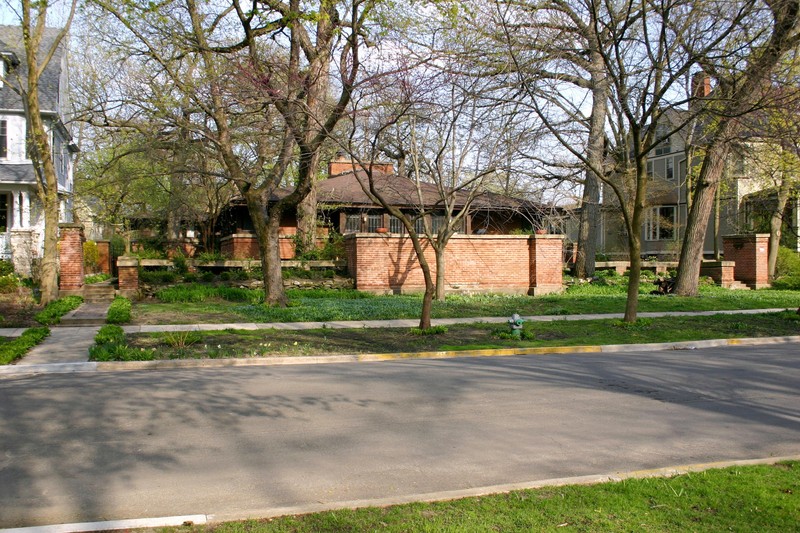Edwin H. Cheney House
Introduction
Text-to-speech Audio
Images
Facade of Edwin H. Cheney House

Backstory and Context
Text-to-speech Audio
Around 1900, Edwin H. Cheney, an electrical engineer, commissioned Frank Lloyd Wright to design a new home for his family in the prosperous Chicago suburb of Oak Park. With this project, Wright designed one of his most intimate and inconspicuous houses. Completed in 1903, the Edwin H. Wright House appears as a modest one-story, hipped-roof brick home discreetly situated behind a Roman brick wall. But in reality, Wright simply raised the basement to ground level and concealed it behind the brick wall. All primary living spaces were placed on the upper story of the house along with 52 windows to provide ample light. Placing the front door of the house out of street view and forcing visitors to walk the length of the entire walled façade, the nature of the design created a sense of privacy and impenetrability.
While Wright was involved with the creation of the house, he met Cheney’s wife Mamah (pronounced May-mah). Wright and Mamah embarked on an illustrious affair that peaked in 1909 when they both abandoned their families and fled to Europe, returning a year later. The affair came to an abrupt halt in 1914 when Mamah and her children were murdered by an unstable servant in Taliesin, Wright’s Wisconsin estate. The Edwin H. Cheney House is contributing member of the Frank Lloyd Wright-Prairie School of Architecture Historic District and was added to the National Register of Historic Places on December 4, 1973.Sources
National Register of Historic Places Registration Form. National Park Service. April 6, 2009. December 28, 2018. http://gis.hpa.state.il.us/PDFs/200767.pdf.
Stamberg, Susan. Novel Sheds Light on Frank Lloyd Wright's Mistress. NPR. August 7, 2007. December 28, 2018. https://www.npr.org/templates/story/story.php?storyId=12536605.
